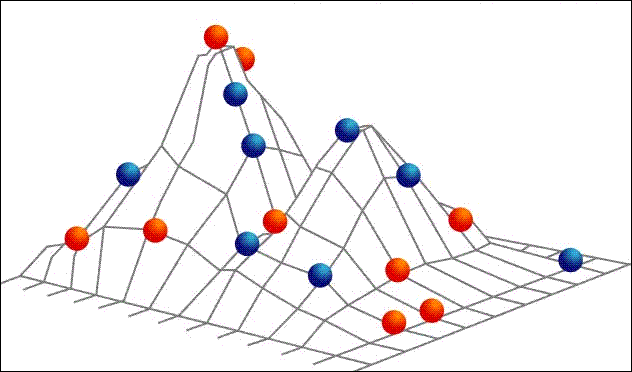[ by Charles Cameron — Timbuctu, Bamiyan, iconoclasm, dissolution of the monasteries, conceptual mapping, ethics, aesthetics, Venice ]
.
.
Zen called the Ansar al-Din “The Taliban of the Mahgreb” today, pointing to an article on the destruction of the Bamiyan Buddhas, and that’s an equation of a sort: destruction of the Sufi shrines in Mali compares with and in some ways equates to destruction of the Buddhas of Bamiyan.
The similarity lies in the destruction by Islamic zealots of images considered idolatrous — and as Curtis reminded us, a Chritian expression of the same concept also motivated the Iconoclastic movement in Orthodoxy.
To some extent, the dissolution of the monasteries in Henry‘s England under Thomas Cromwell carries a similar resonance.
Which brings me to two tweets I received in my Twitterfeed today.
**
Here’s Tweet Number One, as Dr Seuss might have said:
RT @Ed_Husain: A Danish cartoonist upsets us Muslims, but Sufi shrines attacked in Pakistan, Egypt, Libya, Mali, Iraq. No similar outcry.
— Aaron Y. Zelin (@azelin) July 3, 2012
And Tweet Number Two:
Interesting it is only when treasures are destroyed – rather than lives, people & families – that northern Mali moved to the front pages
— Ian Birrell (@ianbirrell) July 3, 2012
**
Between the two of them, and with an eye to Zen’s remark, I get the idea that there’s a style of mental mapping that I can just about see out of the corner of my eye — a mapping that would interest me if I could figure out more about how to take it from being implicit and verbal and make it graphical and visible.
In this mapping, we would lay out the manner in which things presumed equal are treated differently.
I suspect the mapping might initially look something like the graphic at the head of this post — which I’ve borrowed from the materials on an interesting “Co-Revolutionary War Game” devised by Alidade in 2003 or thereabouts.
**
Arguably the publication of blasphemous cartoons of the Prophet upsets many Muslims more than does the destruction of Sufi shrines. Likewise, the publication of Salman Rushdie‘s Satanic Verses upsets many Muslims more than does the fatwa calling for Rushdie’s death. The burning of Qur’ans seems to upset many Afghans more than the deaths of nine Afghan children… And likewise, the loss of human lives in Mali seemingly pales in comparison to the loss of the Timbuctu shrines of saints in the eyes of the western press.
Throw in the Bamiyan Buddhas, and you have a first cluster of data-points that might be mapped in terms of public outrage — Christian, Buddhist, Muslim, cultural, political. the peaks and valleys will differ according to the perspectives chosen, and mapping the differences too would be of considerable interest.
**
The question has become something of a classic among ethicists, I believe: whether to rescue an unknown human child — who may if saved, as they say, grow into a Mao or a Michelangelo – or a great masterpiece of painting, if both are swirling past you in the same Venetian flood…
My instinct is with the child, but oh! — my temptation goes towards the painting…



